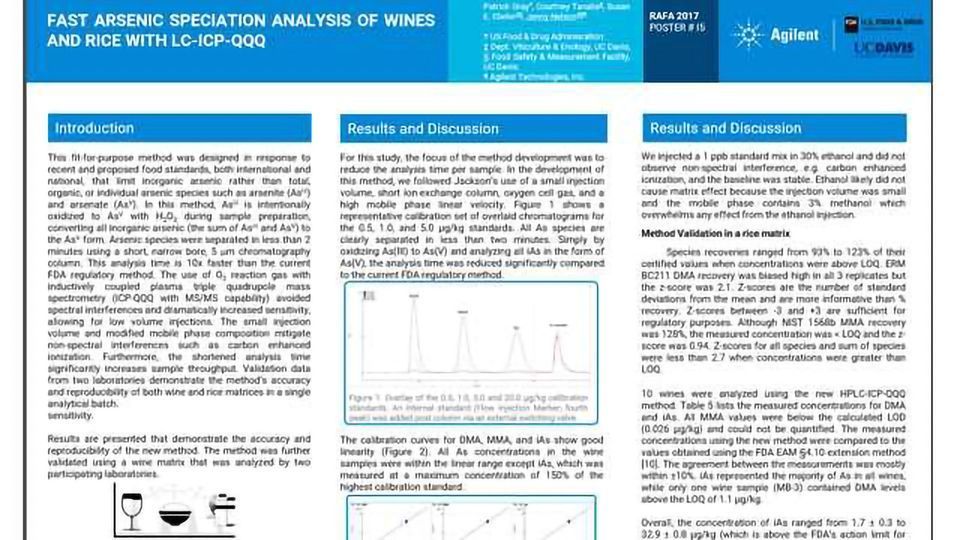Fast arsenic speciation analysis of wines and rice with LC-ICP-QQQ

This fit-for-purpose method was designed in response to recent and proposed food standards, both international and national, that limit inorganic arsenic rather than total, organic, or individual arsenic species such as arsenite (AsIII) and arsenate (AsV). In this method, AsIII is intentionally oxidized to AsV with H2O2 during sample preparation, converting all inorganic arsenic (the sum of AsIII and AsV) to the AsV form. Arsenic species were separated in less than 2 minutes using a short, narrow bore, 5 um chromatography column. This analysis time is 10x faster than the current FDA regulatory method. The use of O2 reaction gas with inductively coupled plasma triple quadrupole mass spectrometry (ICP-QQQ with MS/MS capability) avoided spectral interferences and dramatically increased sensitivity, allowing for low volume injections. The small injection volume and modified mobile phase composition mitigate non-spectral interferences such as carbon enhanced ionization. Furthermore, the shortened analysis time significantly increases sample throughput. Validation data from two laboratories demonstrate the method’s accuracy and reproducibility of both wine and rice matrices in a single analytical batch.
Results are presented that demonstrate the accuracy and reproducibility of the new method. The method was further validated using a wine matrix that was analyzed by two participating laboratories.
The method presented here has been shown to work for both wine and rice matrices. Runtime has been decreased to 2 minutes, which is a factor of 10x faster than previous methods. The method also showed improved sensitivity and limits of detection and quantification compared to the current FDA method. Small injection volumes and addition of methanol in the mobile phase increased robustness to non-spectral interferences and makes this method more suitable for wine speciation. If needed, analysis time and resolution could be further improved by decreasing injection volume, increasing mobile phase flow rate and using a small volume,fast-washout spray chamber.





